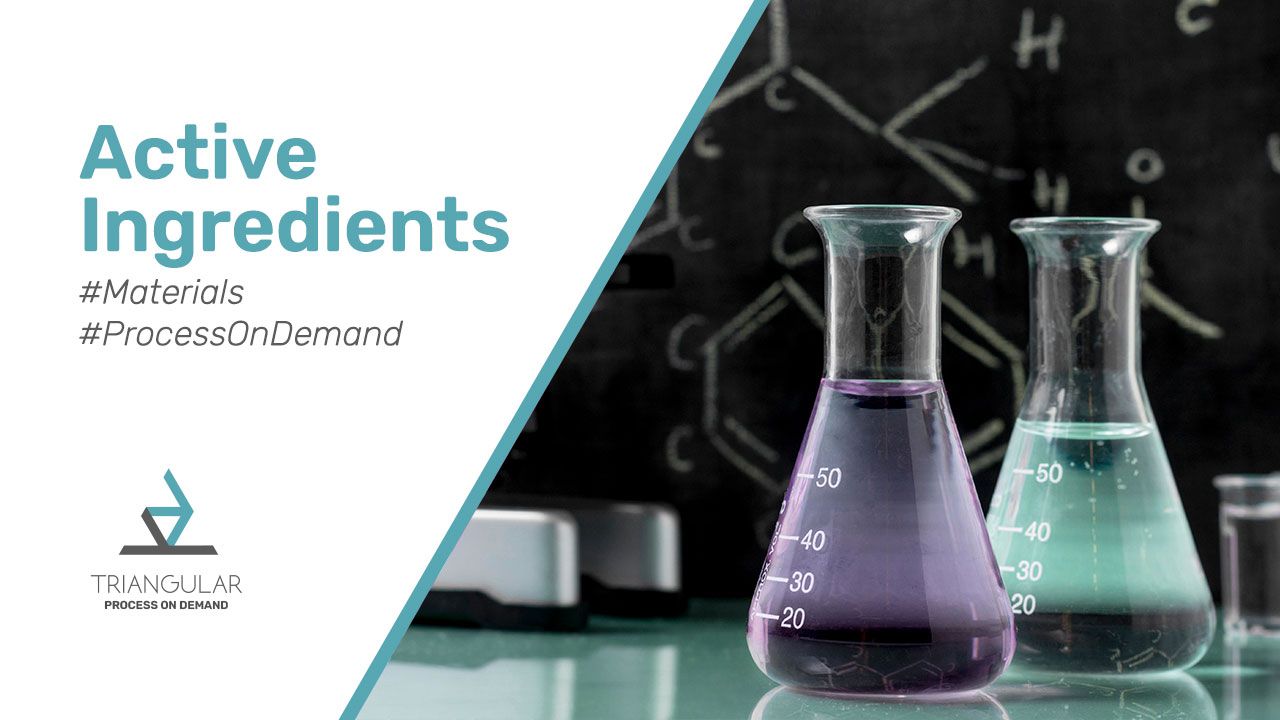If you have a headache, you might occasionally take a painkiller. For example, ibuprofen, paracetamol, or aspirin (no advertising). And you trust that in the small capsule or tablet, there is just the right amount (not too much, not too little) of the pain-relieving substance.
The same applies to fertilizers, cosmetics, cleaning products and vitamins.
These magical components are called #ActiveIngredients and are crucial in various industries.
Here are some examples of active ingredients and the industries in which they are commonly used:
Pharmaceuticals:
Acetaminophen (Paracetamol): Used as a pain reliever and fever reducer.
Ibuprofen: An anti-inflammatory and pain-relieving medication.
Aspirin (Salicylic Acid): Used for pain relief, anti-inflammatory purposes, and blood thinning.
Lisinopril: An ACE inhibitor used to treat high blood pressure and heart failure.
Metformin: Used to manage type 2 diabetes.
Cosmetics and Personal Care:
Retinol (Vitamin A): Used in skincare products to promote collagen production and skin cell turnover.
Hyaluronic Acid: A moisturizing agent often used in skincare products to hydrate the skin.
Salicylic Acid: Used in acne treatments and exfoliating products.
Octinoxate and Zinc Oxide: UV filters used in sunscreens to protect the skin from harmful UV radiation.
Alpha Hydroxy Acids (AHAs): Used in exfoliating and anti-aging products to remove dead skin cells and improve skin texture.
Agriculture:
Glyphosate: A herbicide used to control weeds in various crops.
Neonicotinoids: Insecticides used to protect crops from insect pests.
Fungicides: Various chemicals used to control fungal diseases in plants.
Herbicides: Chemicals used to control unwanted plants and weeds in agricultural settings.
Food and Beverage:
Caffeine: A natural stimulant found in coffee, tea, and various energy drinks.
Vitamins (e.g., Vitamin C, Vitamin D): Added to foods and beverages to fortify them with essential nutrients.
Monosodium Glutamate (MSG): A flavor enhancer used in various processed foods.
Cleaning and Household Products:
Bleach (Sodium Hypochlorite): Used as a disinfectant and stain remover.
Ammonia: Used in various cleaning products for its degreasing and cleaning properties.
Enzymes: Used in laundry detergents to break down stains and organic matter.
Pesticides and Insecticides:
Pyrethroids: Synthetic chemicals used to control insects in agricultural and residential settings.
Bt (Bacillus thuringiensis): A bacteria-derived insecticide used in organic farming and gardening.
The manufacturing of active ingredients, especially in industries such as pharmaceuticals, chemicals, and agriculture, can be complex and challenging due to various factors. Some of the key challenges include:
- Synthesis and Formulation Complexity: Developing and manufacturing active ingredients often involves intricate chemical processes. Achieving high yield, purity, and reproducibility can be challenging, especially for complex molecules. Formulating these ingredients into stable and effective products further adds to the complexity.
- Regulatory Compliance: Many industries, particularly pharmaceuticals and agrochemicals, are heavily regulated to ensure safety and efficacy. Meeting stringent regulatory requirements, including Good Manufacturing Practices (GMP), Quality Control (QC), and quality assurance, can be demanding and time-consuming.
- Process Scalability: Transitioning from laboratory-scale synthesis to large-scale production can introduce unexpected challenges. Factors such as reaction kinetics, heat and mass transfer, and mixing efficiency can differ significantly when scaling up, potentially affecting product quality and yield.
- Raw Material Sourcing and Supply Chain Management: Securing a consistent supply of high-quality raw materials can be difficult, especially for rare or specialized compounds. Disruptions in the supply chain, geopolitical issues, and price fluctuations can impact production.
- Equipment and Facility Design: Designing and maintaining facilities that can handle the specific requirements of manufacturing active ingredients is crucial. This includes considerations for containment, safety protocols, and equipment compatibility with the chemicals being processed.
- Environmental and Safety Concerns: Manufacturing processes can generate hazardous waste and byproducts. Proper waste management and adherence to environmental regulations are necessary to minimize the environmental impact and ensure worker safety.
- Process Efficiency and Cost Control: Developing efficient manufacturing processes that minimize waste, energy consumption, and production time is essential to control costs and improve overall competitiveness.
- Analytical Testing and Quality Assurance: Rigorous testing is required to ensure the identity, purity, potency, and safety of active ingredients. Developing reliable analytical methods and quality control procedures can be intricate and time-intensive.
- Intellectual Property Protection: Protecting the intellectual property related to the manufacturing processes and formulations of active ingredients is crucial to prevent unauthorized replication and ensure competitive advantage.
- Batch-to-Batch Variability: Even with careful control of manufacturing processes, there can be inherent variability between batches. Managing this variability to ensure consistent product quality is a challenge.
- Emerging Technologies: Keeping up with advancements in technology, such as continuous manufacturing, automation, and data-driven approaches, while balancing the costs and benefits, presents its own set of challenges.
- Global Market Dynamics: Active ingredient manufacturers often operate in a global market. Navigating international regulations, trade agreements, and market fluctuations adds complexity to the manufacturing landscape.
Overcoming these challenges requires a combination of scientific expertise, process optimization, regulatory compliance, and strategic planning.
Companies in active ingredient manufacturing must remain adaptable and innovative to succeed in their respective industries.
Check out on our platform for experts in the area of IP protection, material analysis or Contract Manufacturing opportunities.

